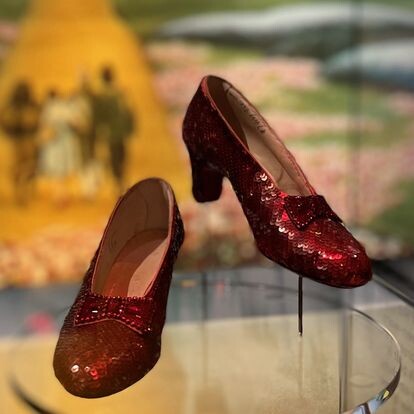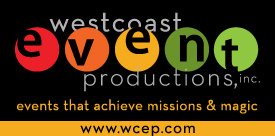Los Angeles, CA. From the scientific and technological advancements that made color possible, to its emotional and psychological impact on viewers, to the way filmmakers use color as a storytelling tool.
Color in Motion: Chromatic Explorations of Cinema at The Academy Museum investigates the role of color in film, from the scientific and technological advancements that made it possible, to its emotional and psychological impact on viewers, to the ways filmmakers use color as a storytelling tool.
The exhibition takes an immersive and innovative approach to understanding cinematic color through six unique galleries, each focusing on a different aspect of film color. Color in Motion engages visitors through dynamic, colorful film installations and features objects from the silent era through the digital age, including cameras, projectors, costumes, props, animation cels, and film posters.
Object highlights include:

Dorothy’s ruby red slippers from The Wizard of Oz (USA, 1939)
- A green costume worn by Kim Novak in Vertigo (USA, 1958)
- A blue costume worn by Jamie Foxx in Django Unchained (USA, 2012)
- The red jacket worn by Jack Nicholson in The Shining (USA, 1980)
- A red sari worn by Aishwarya Rai Bachchan in Jodhaa Akbar (India, 2008)
- Two-color and three-color Technicolor cameras highlighting the Technicolor II and IV processes, respectively
- A yellow color study model of the house from Pixar’s Up (USA, 2009)
- Original materials from Disney’s Ink & Paint Department
- An early stencil cutting machine and stencil application machine used at Pathé studios
A Color Arcade concludes the exhibition with an opportunity for visitors to physically interact with color through physical movement, inviting them to see, create, and experience “color in motion.”
Color in Motion: Chromatic Explorations of Cinema will also be accompanied by a vibrant catalogue co-published with DelMonico Books.
About:
The Academy Museum of Motion Pictures is the largest museum in the United States devoted to the arts, sciences, and artists of moviemaking. Global in outlook and grounded in the unparalleled collections and expertise of the Academy of Motion Picture Arts and Sciences, the Academy Museum offers exceptional exhibitions and programs that illuminate the world of cinema. They are immersive and dynamic and tell the many stories of the movies—their art, technology, artists, history, and social impact—through a variety of diverse and engaging voices. The Academy Museum tells complete stories of moviemaking—celebratory, educational, and sometimes critical or uncomfortable.
Designed by Pritzker Prize-winning architect Renzo Piano, the Academy Museum’s seven floors feature exhibition spaces, special event spaces, a conservation studio, a café, and a museum store. The Shirley Temple Education Studio hosts workshops and learning opportunities for teens, schools, and families. In addition, the museum’s 952-seat David Geffen Theater and 277-seat Ted Mann Theater present a year-round calendar of screenings, film series, member programs, panel discussions, family programs, and symposia. Programs include retrospectives and thematic series that illuminate the artistic and cultural contributions of an international selection of movie artists.
Every decision made at the Academy Museum of Motion Pictures reflects a carefully crafted set of guiding principles that begins with the Mission Statement. These extend into the design of its exhibitions, the development of its public and educational programs, the creation of its publications, the hiring and growth of its staff, and the development of its board of trustees and committees.





